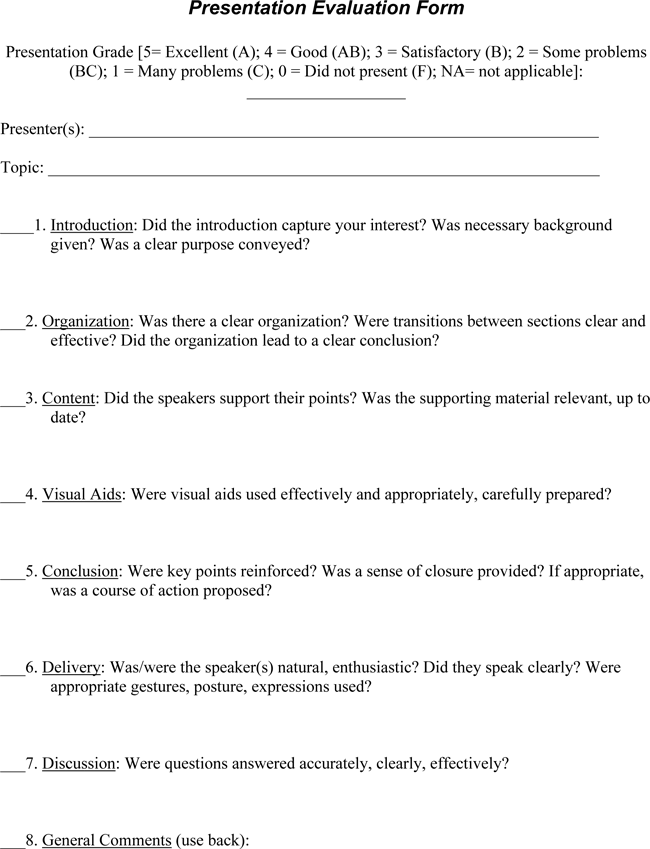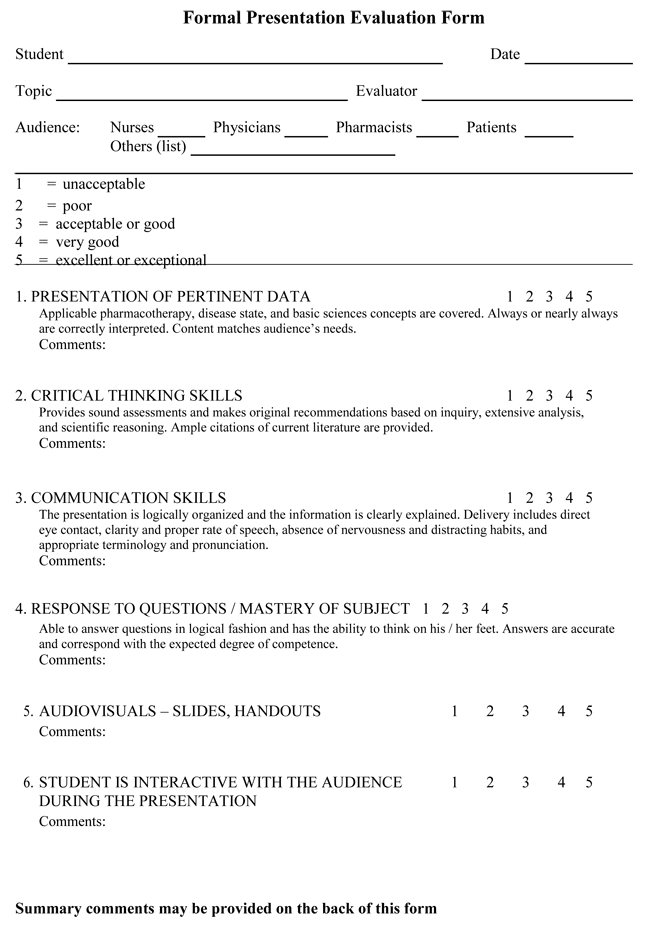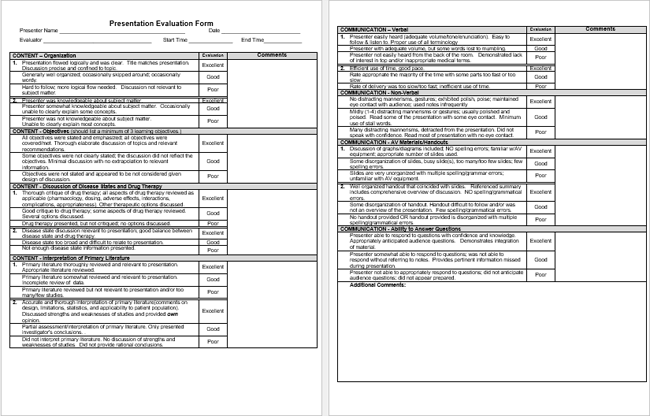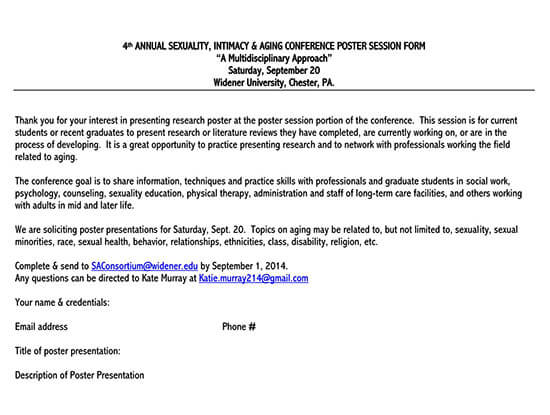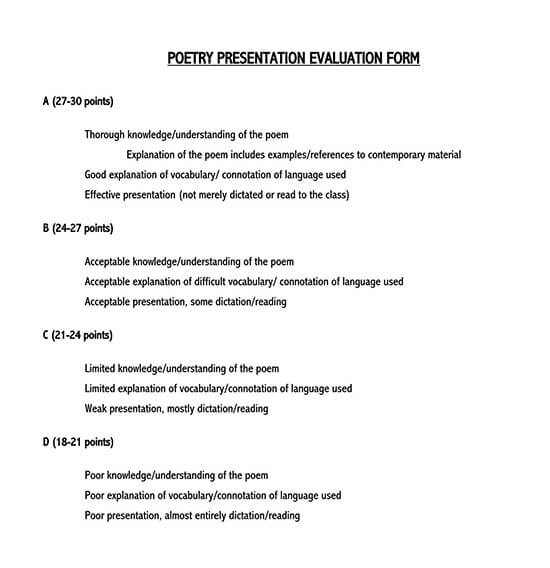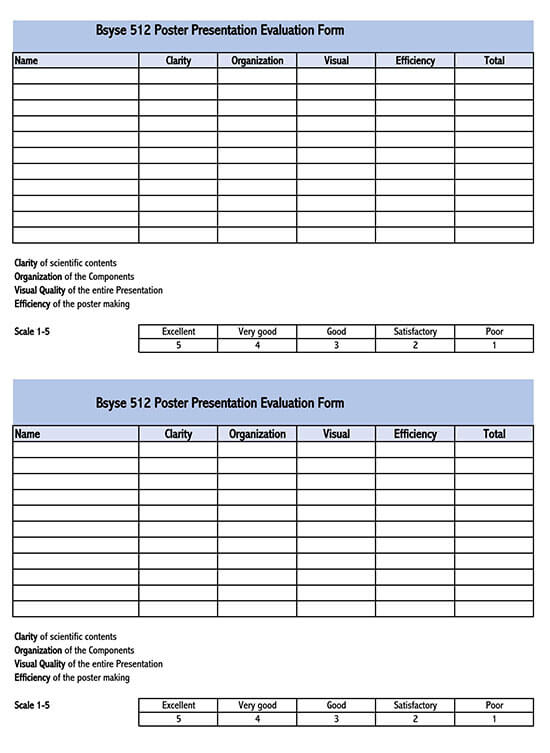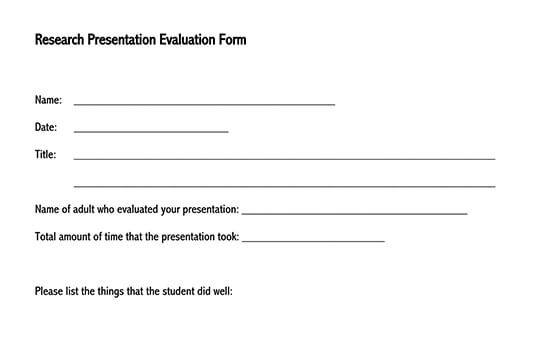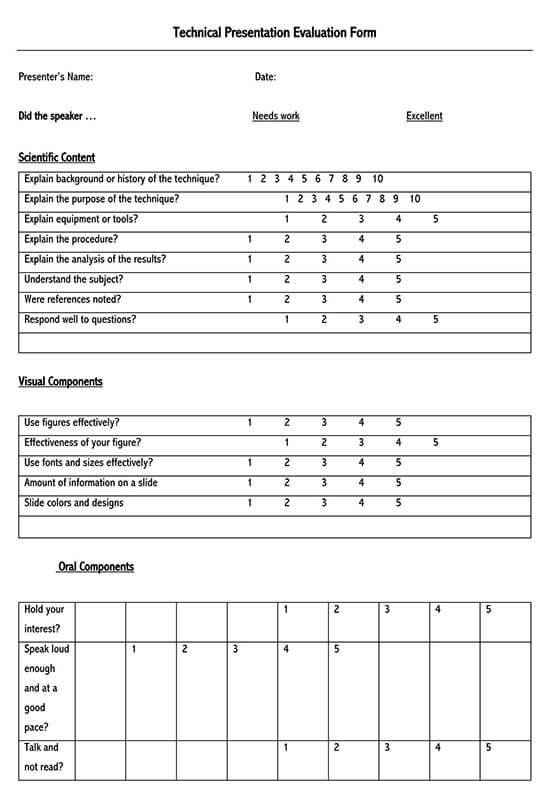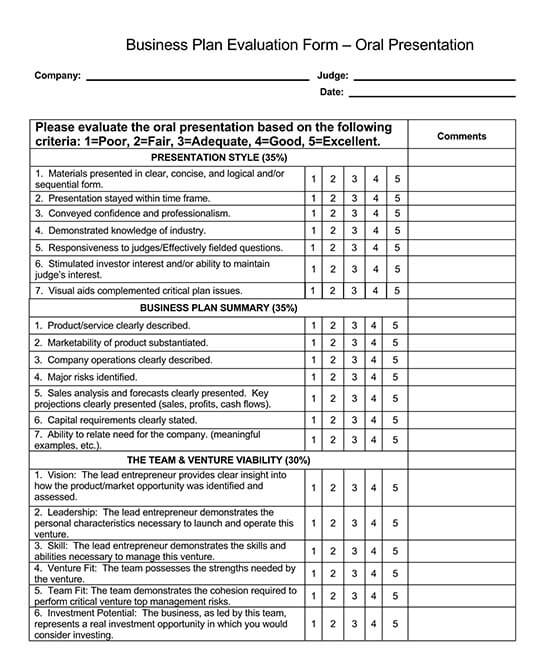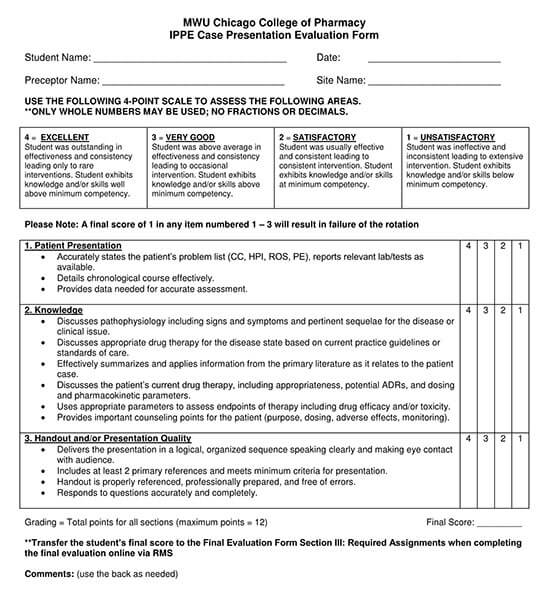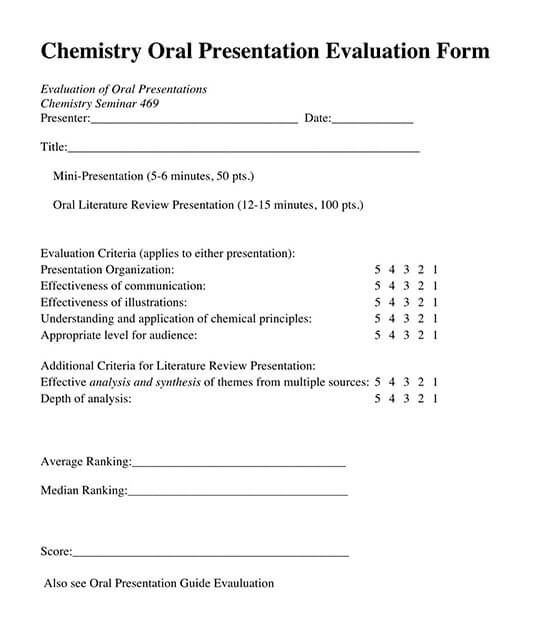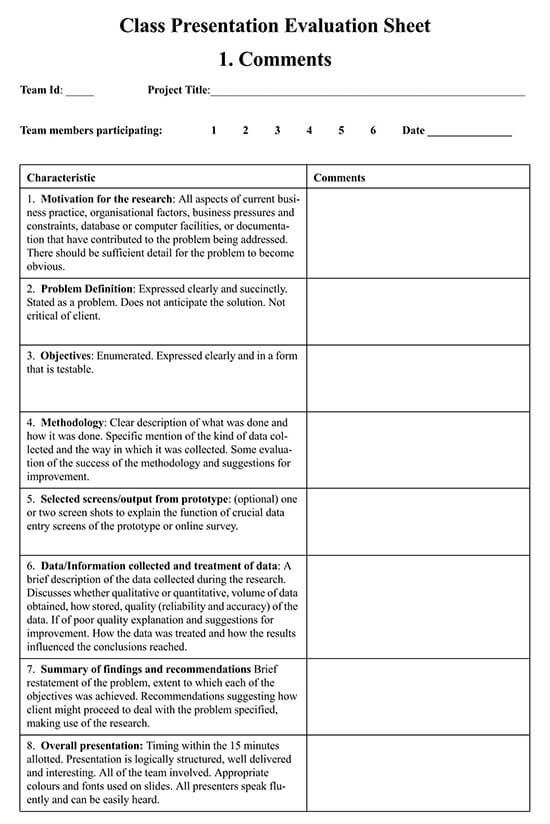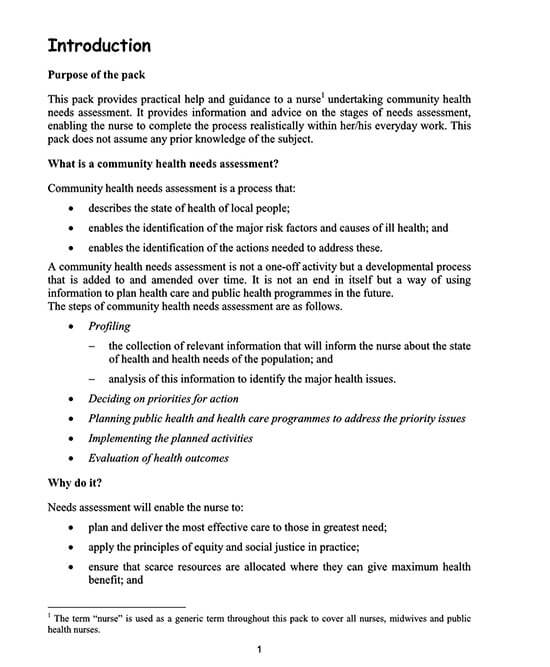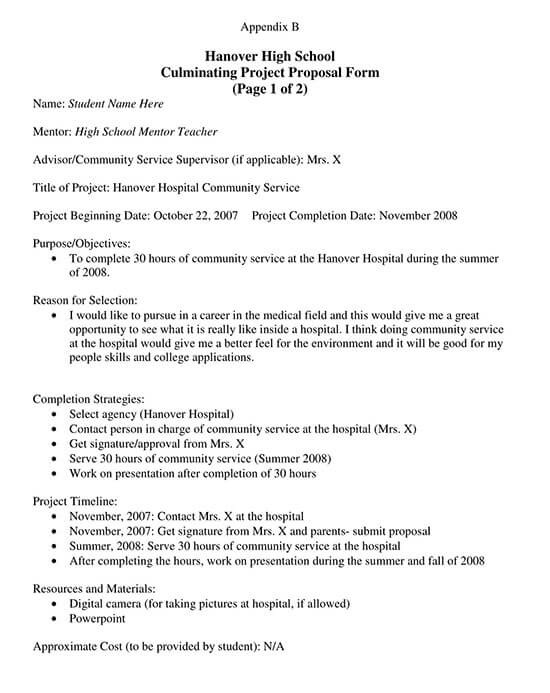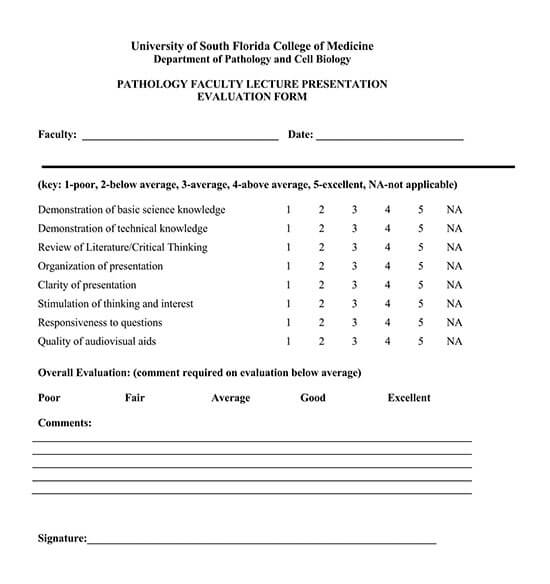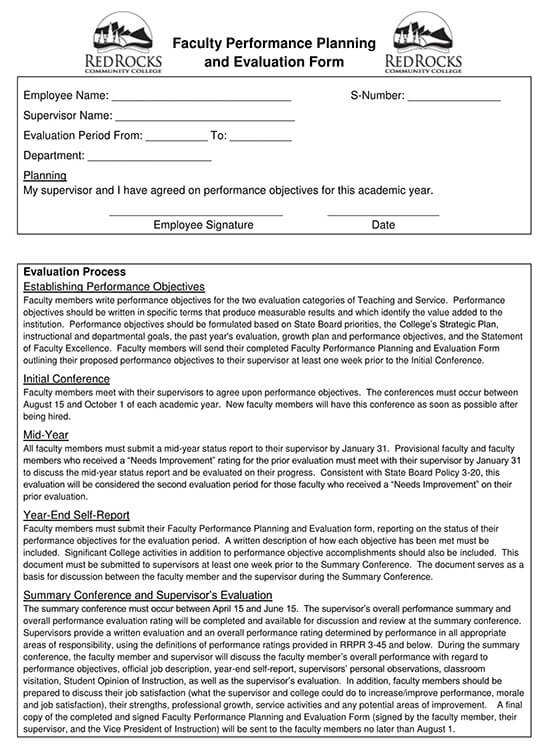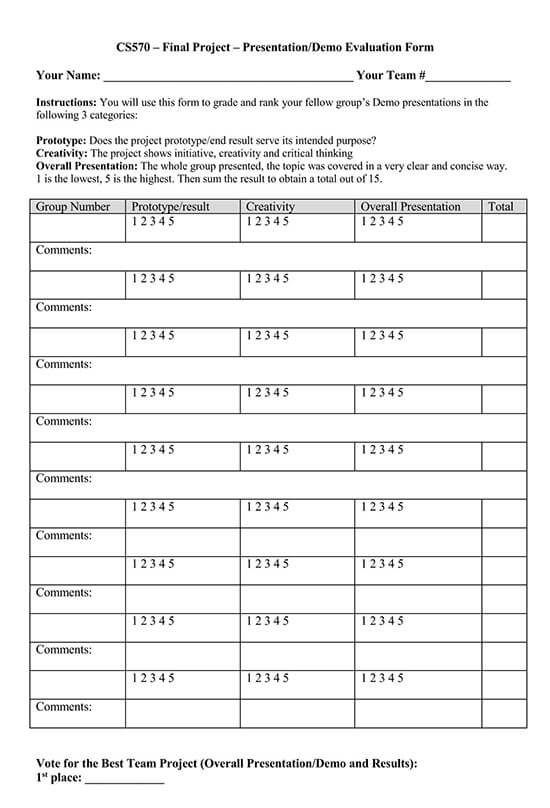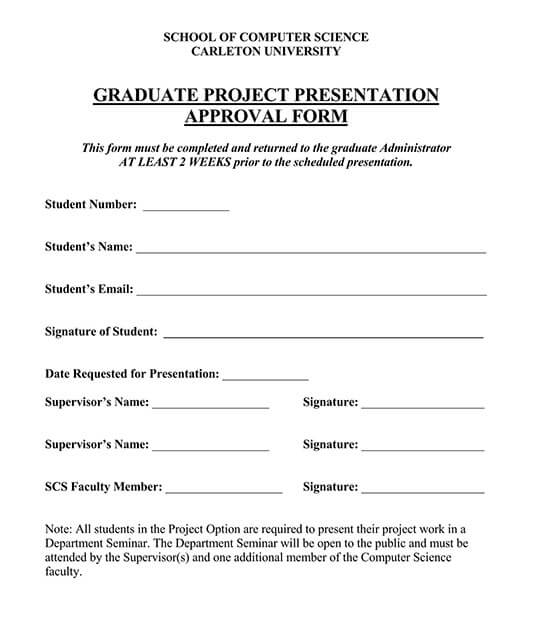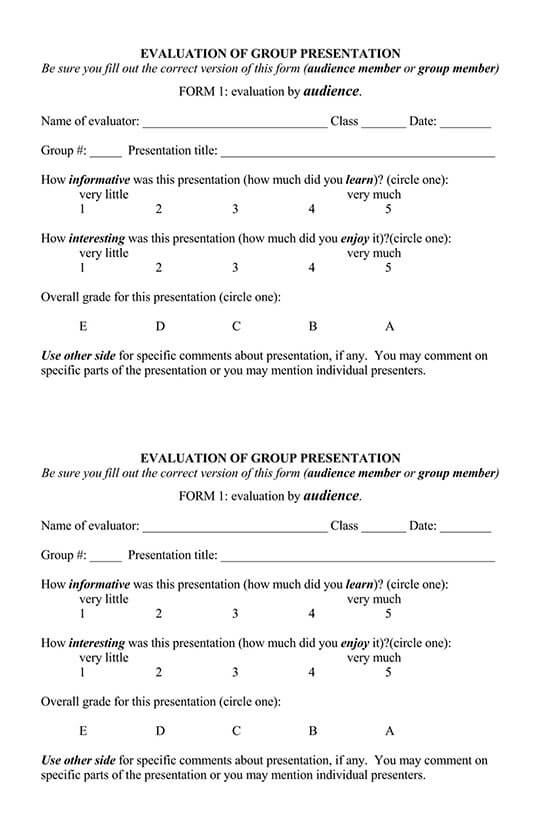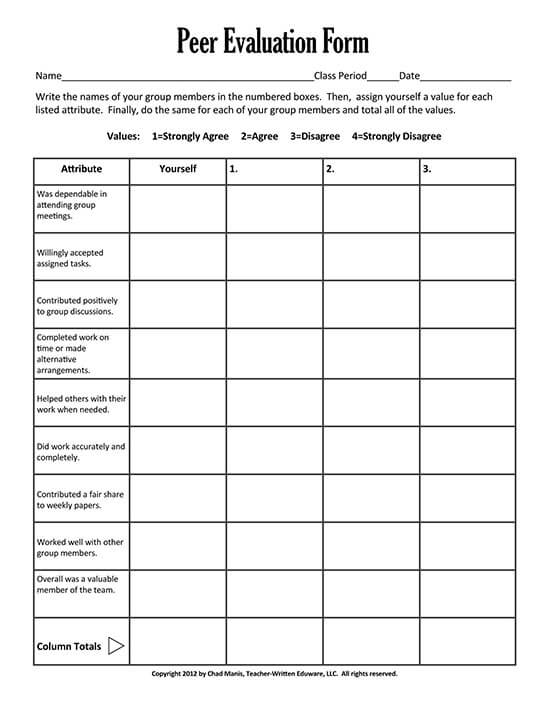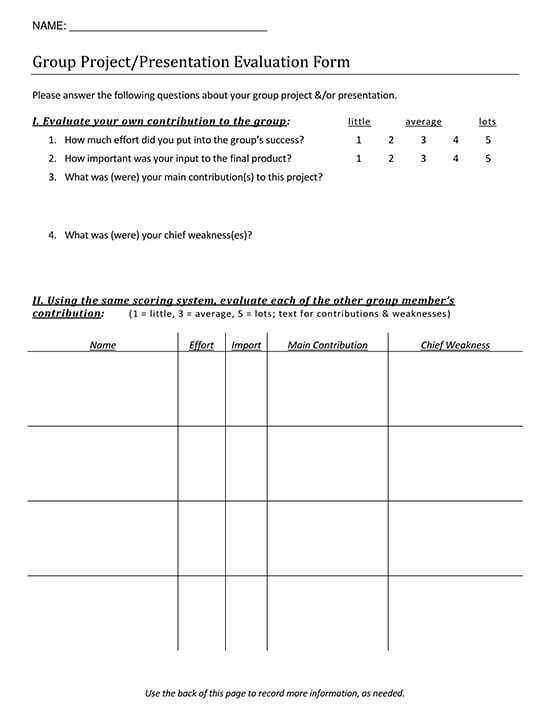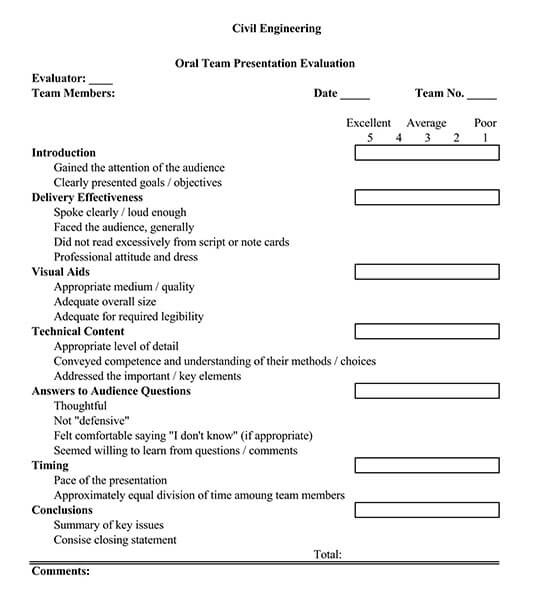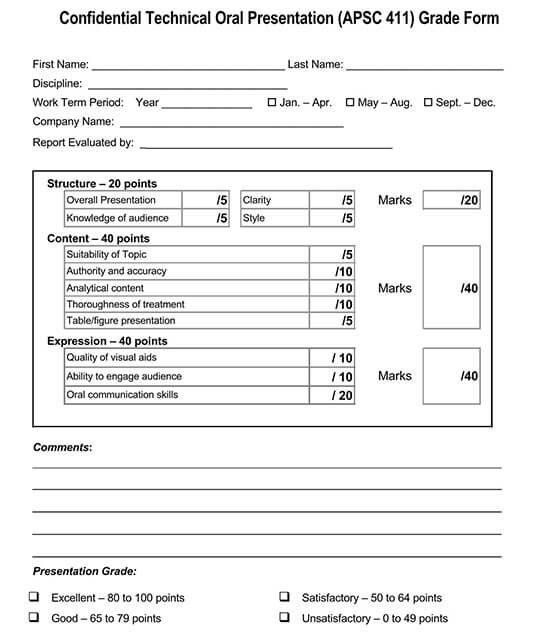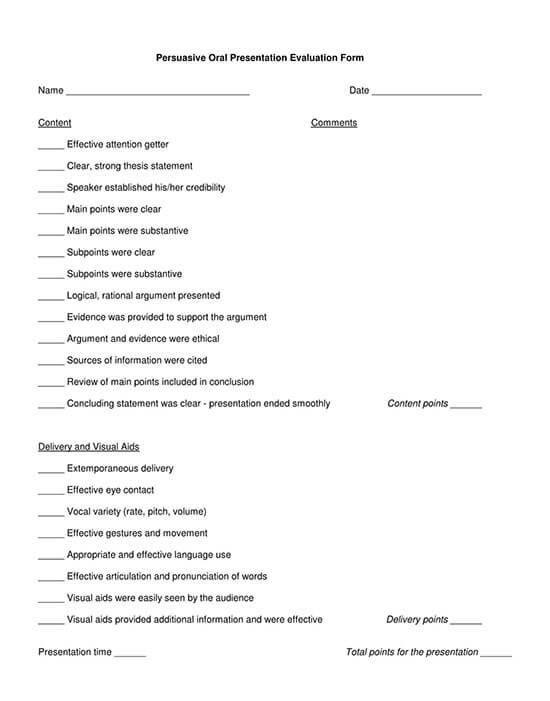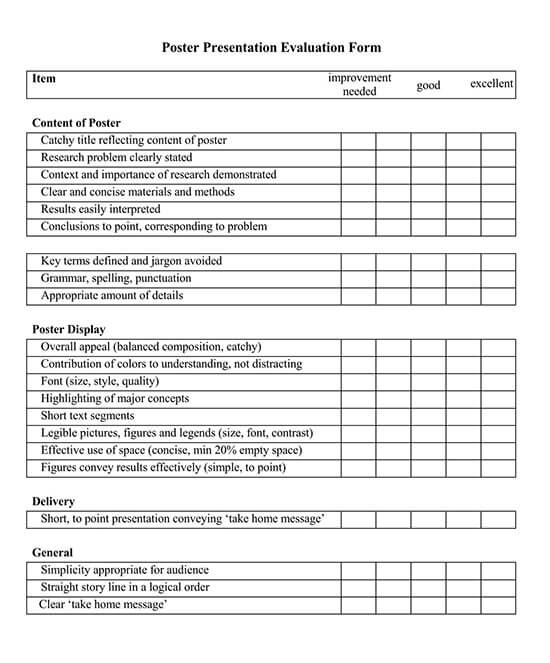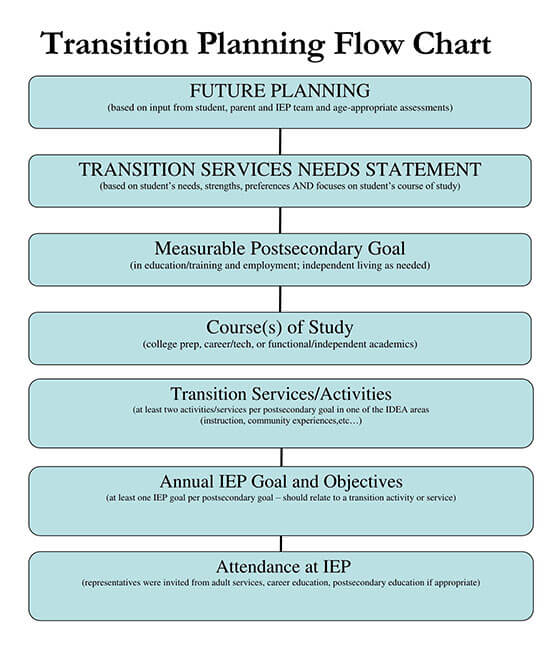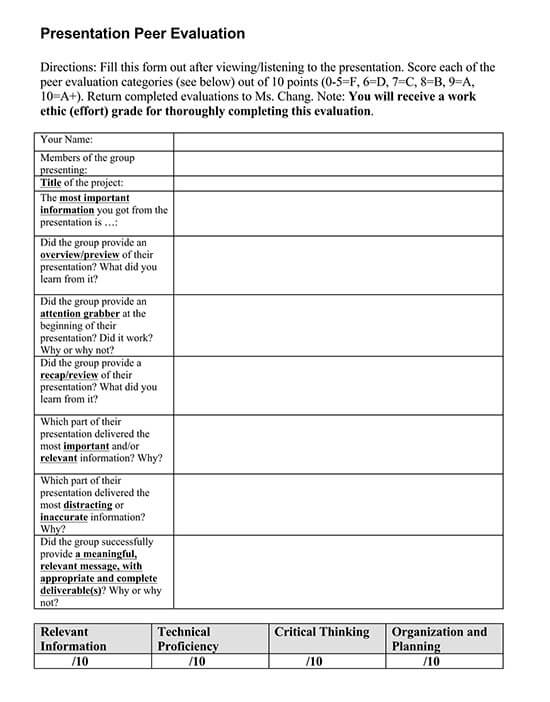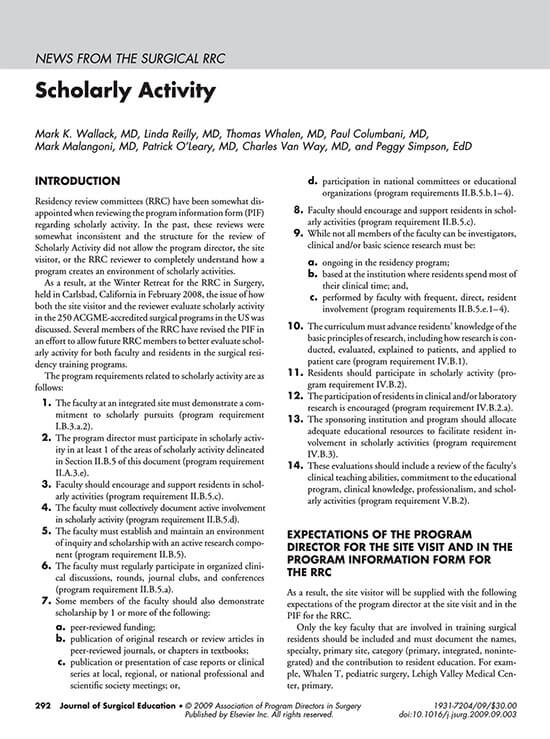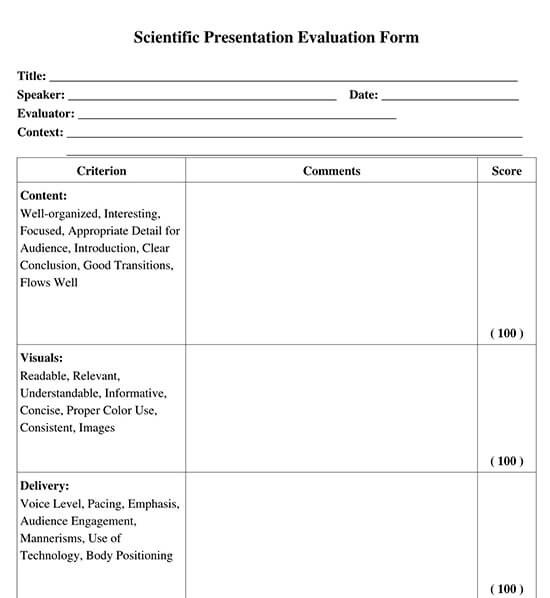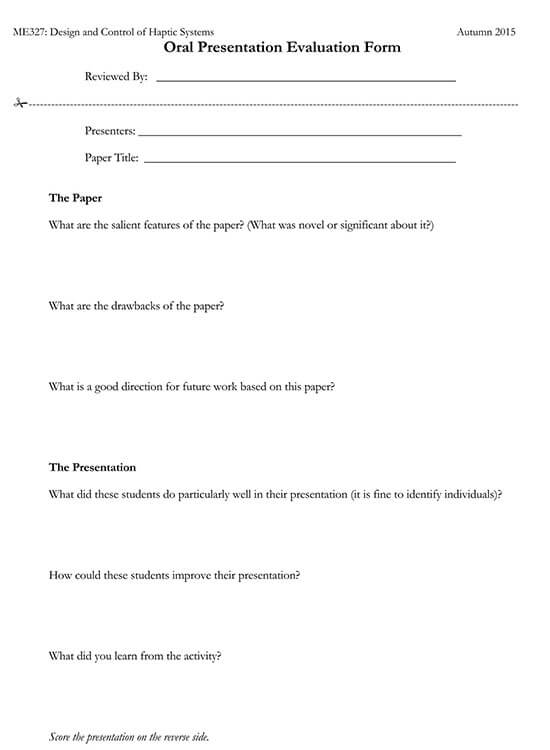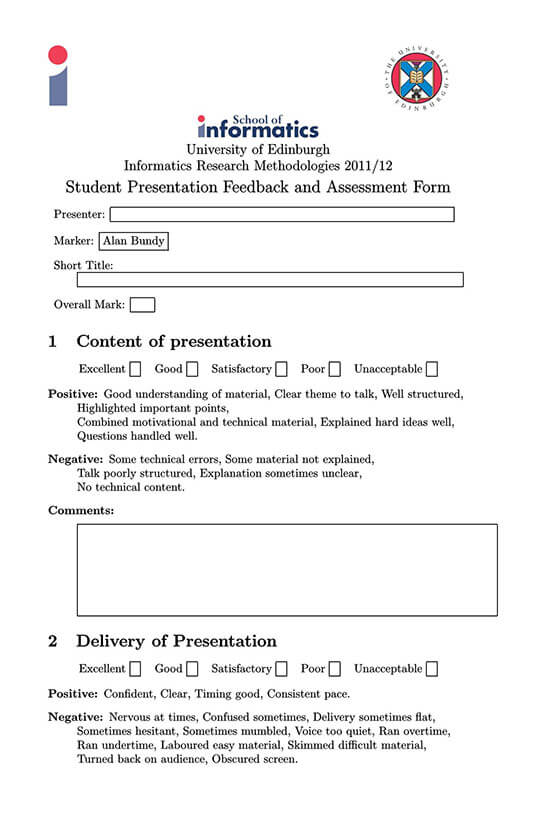Defining your story and writing your presentation without any problem does not mean that you are through your presentation. Each time you have a presentation, it is essential to ensure that the final presentation is effective by conducting a presentation evaluation. After all, not taking the time to consider the things that you did wrong or right when preparing your presentation will certainly limit your chances of becoming the best PowerPoint ranger that you have always dreamt of.
What is a Presentation Evaluation Form
A presentation evaluation form is a document that takes readers through a checklist of questions designed to evaluate the strengths and weaknesses of a presentation, with improvement tips. The evaluation form is like an audit. Presentation evaluation forms use a rating scale to determine how well the presenter met the objectives of the presentation. The presentation evaluation form is used to improve the presenter’s presentation skills. It provides them with feedback from other people (usually experts) and evaluates them on various aspects of a good presentation.
Purpose of a Presentation Evaluation Form
Evaluating a presentation is essential because it helps the presenter improve the aspects that need improvement. The presenter gets to know where problems in their presentation are and what to focus on, helping them improve their overall performance. Presentation evaluation forms can be used in many different situations. They can evaluate internal presentations, formal presentations, and even informal presentations. They can also be used in various industries such as educational environment, business, healthcare, and any other industries.
Elements of a Presentation Evaluation Form
Any presentation evaluation form should contain features integral to its proper functioning. The following are some of the elements of a presentation evaluation form:
The name of the presenter
It is crucial to have each presenter’s name in their presentation evaluation forms to distinguish between the different speakers. It is helpful because it helps the evaluator to get to know each speaker better, which can be helpful when reading a report.
The name of the evaluator(s)
The names of the people who evaluate the presentations to give feedback about it should be put in the form itself. In addition, using a form with multiple evaluators ensures that there will be an objective review and a more thorough evaluation of the speaker’s needs and strengths.
The date and time of the presentation
The date and time of the presentation will help the reader know when the speaker gave their presentation. This information is vital because it can help the reader get to know what was going on around them at that time, which can be helpful in evaluating a situation or getting to know the speaker better.
The topic of the presentation
The next item to be included in the evaluation form is the topic of the presentation. Again, the topic should be clearly stated on the form to help readers and presenters understand what was going on in the presentation.
The duration of the presentation
The duration of the presentation is significant in the evaluation of a speaker’s presentation. With this information, it will be easier for evaluators to know how well the speaker conducted their presentation. The duration of the presentation should also be listed in a table format to allow readers to get to know how long specific parts of the presentations were.
The qualities of the speaker
The speaker’s qualities to be listed on a presentation evaluation form should be relevant to the area of expertise. For example, if a presentation is about the weather and the presenter does not know the weather, it might not be appropriate for them to discuss in-depth changes in the climate of a specific region. Therefore, the evaluator should look at both the strengths and weaknesses of most speakers and make sure there are no inaccuracies.
The quality of the execution of the topic
This section of a presentation evaluation form is the most important for evaluators to fill out. This section is usually filled out after the evaluator has evaluated the other aspects of the presentation, allowing them to view it objectively. The quality of execution is judged based on how well each of the aspects and steps in a presentation is executed and how well they were organized.
Other information
Other information that could be included in the presentation evaluation form includes questions such as what was the title of the presentation? What were three key points made? What is the call to action the audience is required to take? Were the visuals exciting or boring? What were the strengths and weaknesses? And what was the overall impression of the speaker?
How to Conduct a Presentation Evaluation
The first source you need to tap for proper feedbacks is your friends and co-workers. Take your time and ask your close colleagues to assist you in critiquing your presentation. To get the best result, make sure you listen to everything they have to say and pay attention to the common points. It is also vital to email every person that leaves a card after tending the presentation. Such a simple follow up might serve as an appreciation and even an informal request for feedbacks that they might wish to offer.
Body talk
Your body language always says more than your words, particularly if you understand reading body language. Make sure you study your crowd’s body language, and you will have an easy time telling how your presentation is impacting the crowd from time to time.
Incorporate and ruminate
Start by thinking over all the reviews and feedback you have gathered from your last presentation. As much as this might seem tiresome or boring, taking just 15 minutes to evaluate and focus on what you have managed to pull together can reveal both the bad and good patterns, which can help your next presentation.
Go for as many feedbacks as possible
Do not get tired of following up on the feedback. This will help you get more clarity. People always love it when asked about their feedback, and clear feedback is a better way of getting the information you want for your evaluation.
Incorporate
Having evaluated the presentation, it is essential that you now incorporate what you have learned and use it in your next presentation. Make sure you follow the same plan, and you will surely notice the vast improvements in presentation and confidence.
The Benefits of Conducting a Presentation Evaluation
Many benefits come with performing a presentation evaluation as follows:
- It gives you a clear understanding of the things that you might be doing wrong during your presentation.
- It provides you with better approaches that help in making your presentation more engaging.
- You get to learn how to arrange your performance in a particular manner that ensures you present it with ease.
- It helps in building your confidence during the presentation.
- Through the evaluation, you get the chance to create standard presentations, which, on the other hand, helps make sure people within the company consistently communicate information.
Free Forms
How to Make Your Presentation More Effective
Show passion and connect with the audience
The most important thing with an effective presentation is to ensure you create a better connection with your audience. A better of doing this is by letting your passion for the presentation subject drive you. Be honest with your audience regarding what is essential and why. Being authentic ensures that the audience can connect with your presentation and also respond.
Focus on the needs of the audience
The presentation has to be centered within the audience. When preparing the presentation, ensure you keep in mind the needs of your audience. Make sure you focus on your audience’s response and react to them. This way, it becomes easy for the audience to respond and understand.
Keep it as simple as possible
When preparing the presentation, keep in mind things such as the key message you want the audience to take away. After which you have to make sure the message is clearly and briefly communicated. Most experts will recommend a thirty-second elevator summary while others recommend writing it on the business card. Whichever method you settle for, the vital thing is to keep the core message brief and focused.
Make eye contact and smile to the audience
As much as this may sound simple, a large number of presenters usually fail to nail it. Smiling and making eye contacts help in building a rapport that assists your audience in connecting with your subject and also you. It also eliminates the nervous feeling. Your audience has to see you and even the slides.
Breath, relax and enjoy
Many presenters find it challenging to remain calm when presenting. A good option is, however, to slow your breathing and relax. This ensures that you do not breathe heavily or even collapse during your presentation.
With all this in mind, it is very clear that conducting a presentation evaluation, therefore, has a very important role in every presentation. Apart from helping the presenter understand his or her weakness, it also helps him or she understands the better approaches to put in place during the presentation.
Conclusion
Presentation evaluation forms are used to evaluate the strengths and weaknesses of a speaker’s performance. These forms also provide tips for improvement and ways to enhance their presentation skills. A good presentation evaluation form will include specific feedback on the strengths and weaknesses of the speech. This information can help the speaker know what they can work on to improve their performance. The person evaluating the presentation should also use accuracy in their evaluation, assessing each aspect appropriately to get helpful feedback on how they can improve within their presentations.
